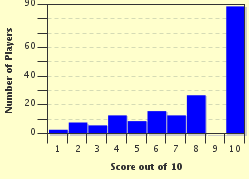Quiz Answer Key and Fun Facts
1. King James IV of Scotland becomes the last British monarch killed in battle.
2. The 19-year old French heroine Joan of Arc is burned at the stake in Rouen.
3. Abraham Lincoln delivers his famous Gettysburg Address.
4. King Harold is killed in battle as the invading Normans overrun the English army.
5. The St. Bartholomew's Day massacre begins weeks of mob violence during the French Wars of Religion.
6. The English score a decisive victory over France at the Battle of Agincourt.
7. The world's deadliest recorded volcanic explosion causes the destruction of more than 70% of the Indonesian island of Krakatoa.
8. King John signs the 'Magna Carta' following months of conflict between rebel barons and the English monarchy.
9. Part of the year-long Siege of Sevastopol, The "Battle of Balaclava" inspired a famous poem by Alfred, Lord Tennyson.
10. Although he had officially abdicated a year earlier, the assassination of the entire Romanov family ends the Romanov dynasty's rule in Russia.
Source: Author
EnglishJedi
This quiz was reviewed by FunTrivia editor
gtho4 before going online.
Any errors found in FunTrivia content are routinely corrected through our feedback system.


